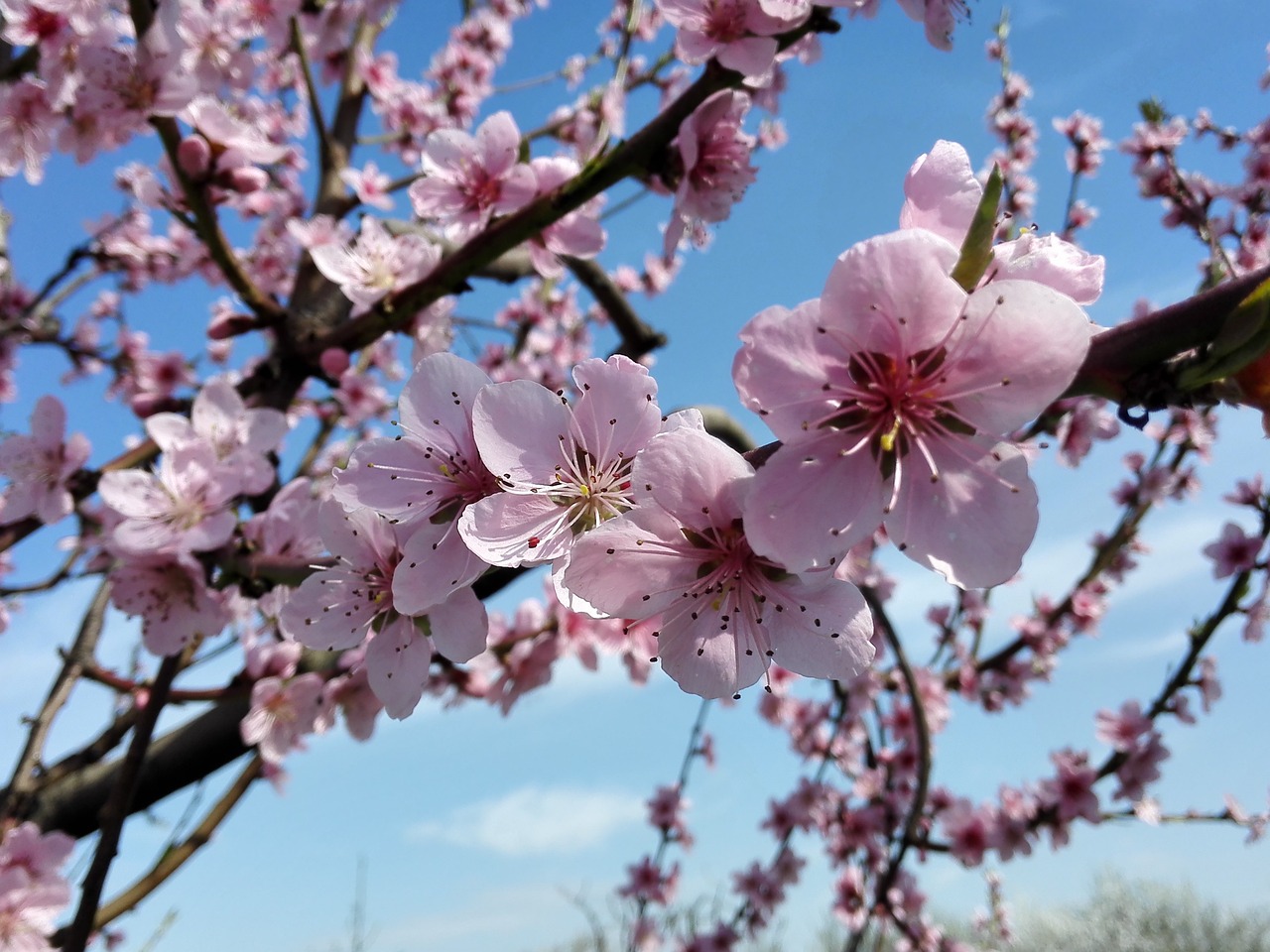I. Getting Started with Flowering Peach Trees
Flowering peach trees, with their delicate blossoms and delectable fruits, have been cherished by gardeners and nature enthusiasts for centuries.
These magnificent trees not only add visual beauty to your landscape but also offer the joy of harvesting your own peaches.
Why Choose Flowering Peach Trees?
Before we delve into the nitty-gritty of cultivation, it’s essential to understand why flowering peach trees are a valuable addition to any garden.
These trees hold a special place in the hearts of many for several reasons:
- Aesthetic Beauty: Flowering peach trees are renowned for their stunning pink or white blossoms that grace the branches in spring. These vibrant blooms transform your garden into a captivating wonderland, making them a favorite among landscape designers and nature enthusiasts.
- Home-Grown Peaches: Beyond their ornamental value, flowering peach trees provide delicious, juicy peaches. There’s nothing quite like savoring a sun-ripened peach straight from your garden. It’s a rewarding experience that only a few fruits can match.
- Versatile Landscaping: Whether you have a spacious garden or a compact backyard, flowering peach trees can be incorporated into various landscape designs. Their versatility allows them to thrive in diverse environments, enhancing the aesthetics of any space.
- Cultural Significance: In various cultures around the world, peach trees symbolize longevity, prosperity, and good fortune. Planting a flowering peach tree can be a meaningful act that connects you to rich cultural traditions.
Now that we’ve explored the reasons behind the appeal of flowering peach trees let’s move on to the practical aspects of getting started with these beautiful and fruitful trees.
II. Preparation and Location
Before you rush into planting your flowering peach tree, it’s crucial to lay the groundwork for success.
Selecting the right location and understanding the significance of soil conditions and sunlight are pivotal in ensuring your tree thrives.
Choosing the Perfect Spot
Selecting the ideal location for your flowering peach tree is the first and most crucial step in its successful growth. Here’s what you need to consider:
- Sunlight: Flowering peach trees are sun-lovers. They need at least six to eight hours of direct sunlight daily to flourish and produce an abundance of blossoms and fruit. Observe your yard throughout the day to identify areas that receive ample sunlight.
- Soil Drainage: Proper drainage is essential to prevent waterlogged roots, which can lead to root rot and other issues. Peach trees prefer well-draining soil. To test your soil’s drainage, dig a hole about 12 inches deep and fill it with water. If the water drains away within a few hours, your soil has good drainage.
- Air Circulation: Adequate air circulation is vital to prevent diseases and ensure healthy growth. Avoid planting your peach tree in a location where it might be surrounded by tall structures or dense vegetation that could restrict airflow.
- Frost Pockets: Be cautious of frost pockets, low-lying areas where cold air settles. Frost can damage blossoms and young fruit. Choose a spot that’s less prone to frost, if possible.
- Proximity to Structures: Consider how close the tree will be to buildings, fences, and other structures. Flowering peach trees can grow to a significant size, so ensure there’s enough space for it to reach its full potential without obstruction.
- Aesthetic Appeal: While practical factors are essential, also think about the visual impact. Plant your tree where you can enjoy its blossoms and later, its fruits. Consider how it will fit into your overall garden design.
Understanding Soil Conditions
Now that you’ve identified the right spot, let’s delve into soil conditions. Soil quality significantly impacts the health and growth of your flowering peach tree.
- Soil pH: Peach trees thrive in slightly acidic soil with a pH range of 6.0 to 6.5. You can easily test your soil’s pH using a soil test kit or by sending a sample to a local agricultural extension office. If your soil is too alkaline, you can amend it with organic matter or sulfur to lower the pH.
- Soil Composition: Well-draining loamy soil is ideal for peach trees. If your soil is heavy clay, consider adding organic matter such as compost to improve drainage. Conversely, sandy soils may require additional compost or organic mulch to enhance water retention.
By carefully considering these factors and preparing the planting site accordingly, you set the stage for a healthy and thriving flowering peach tree.
III. Planting Process
Now that you’ve chosen the perfect location and prepared the soil, it’s time to get your hands dirty and plant your flowering peach tree.
Step 1: Digging the Hole
- Begin by digging a hole that is twice as wide as the tree’s root ball and roughly the same depth. The hole should be deep enough to accommodate the roots without bending or crowding them.
Step 2: Preparing the Soil
- Examine the soil you’ve removed from the hole. If it’s of poor quality, you can mix it with compost or well-rotted manure to enrich it. This will provide your tree with essential nutrients during its early growth stages.
Step 3: Removing the Tree from its Container
- Carefully remove the flowering peach tree from its container or burlap wrap. If the roots are tightly packed, gently tease them apart to encourage outward growth.
Step 4: Placing the Tree in the Hole
- Position the tree in the center of the hole, ensuring that the top of the root ball is level with the surrounding ground. Avoid planting the tree too deep, as this can lead to waterlogging and root issues.
Step 5: Backfilling with Soil
- Gradually backfill the hole with the enriched soil, pressing it down gently as you go to eliminate air pockets. Water the soil periodically during this process to help settle it.
Step 6: Watering
- Immediately after planting, give your flowering peach tree a thorough watering. This helps settle the soil and ensures that the roots have access to moisture from the start. Water deeply to encourage root growth.
Step 7: Mulching
- Apply a layer of organic mulch, such as wood chips or shredded bark, around the base of the tree. Mulch helps retain soil moisture, suppresses weeds, and regulates soil temperature. Be sure to keep the mulch away from the trunk to prevent rot.
Step 8: Initial Care
- For the first few weeks after planting, monitor your tree closely. Water it regularly to keep the soil consistently moist but not waterlogged. As the tree establishes itself, adjust the watering frequency accordingly.
Step 9: Staking (if necessary)
- If your tree is tall or top-heavy, you may need to stake it for support. Use soft tree ties to avoid damaging the bark, and check the stakes periodically to ensure they’re not constricting the tree’s growth.
By following these steps and giving your newly planted flowering peach tree the care and attention it needs in its early stages, you’re setting the foundation for a healthy, thriving tree that will eventually reward you with its spectacular blossoms and delicious peaches.
IV. Ongoing Care
Congratulations on successfully planting your flowering peach tree! But the journey doesn’t end there; now it’s time to focus on the ongoing care and maintenance that will keep your tree healthy and thriving.
Pruning Your Flowering Peach Tree
Pruning is an essential aspect of maintaining the shape, health, and productivity of your flowering peach tree. Here’s what you need to know:
- Pruning Timing: The best time to prune your peach tree is during late winter or early spring, before new growth begins. This helps to stimulate new growth and maximize fruit production.
- Removing Dead or Diseased Branches: Start by removing any dead, damaged, or diseased branches. This not only improves the tree’s appearance but also prevents the spread of diseases.
- Thinning the Canopy: Peach trees benefit from an open canopy that allows sunlight to penetrate. Thin out crowded or crossing branches to improve air circulation and reduce the risk of disease.
- Height Control: Prune to maintain the desired height of your tree, making it easier to harvest fruit and manage its growth.
- Training Young Trees: For young peach trees, focus on shaping and training them into the desired form, usually an open vase shape. This encourages proper branching and fruit production.
Fertilizing Your Tree
Proper fertilization is crucial to ensure your flowering peach tree receives the nutrients it needs to thrive:
- Timing: Fertilize your tree in early spring before new growth starts and again in late spring or early summer.
- Use a Balanced Fertilizer: Use a balanced, slow-release fertilizer specifically formulated for fruit trees. Follow the manufacturer’s instructions for application rates.
- Avoid Over-Fertilization: Be cautious not to over-fertilize, as this can lead to excessive vegetative growth at the expense of fruit production.
Pest and Disease Management
Keeping your flowering peach tree healthy also involves vigilance against common pests and diseases:
- Pest Monitoring: Regularly inspect your tree for signs of common pests like aphids, scale insects, and peach borers. Early detection allows for prompt action.
- Natural Predators: Encourage natural predators like ladybugs and beneficial wasps to help control pest populations.
- Disease Prevention: Prevent fungal diseases like peach leaf curl by applying a fungicide spray during the dormant season.
- Pruning for Disease Prevention: Pruning practices that improve air circulation can also reduce the risk of fungal diseases.
- Proper Sanitation: Remove fallen leaves and fruit to reduce the potential for disease and pest infestations.
By consistently tending to the pruning, fertilization, and pest management needs of your flowering peach tree, you’ll create an environment where it can flourish and continue to produce beautiful blossoms and delicious peaches.
V. Enjoying the Fruits and Blossoms
After all your hard work in planting and caring for your flowering peach tree, the moment you’ve been waiting for has arrived – the blooming of delicate blossoms and the anticipation of luscious peaches.
When to Expect Blossoms
The blooming of flowering peach trees is a breathtaking sight that heralds the arrival of spring.
Depending on your location and the specific variety of your tree, you can typically expect blossoms in the following timeframes:
- Early Spring: In warmer regions, flowering peach trees may bloom as early as late winter or very early spring. These early blooms are a welcome sign of the changing season.
- Mid-Spring: In most regions, mid-spring is the prime time for peach blossoms. The tree’s branches burst into an explosion of pink or white flowers, creating a stunning display that can last for several weeks.
- Late Spring: Some late-blooming peach tree varieties may produce blossoms in late spring, extending the joy of seeing these lovely flowers.
Caring for Blossoms
To ensure your peach blossoms remain healthy and vibrant, consider the following care tips:
- Protect from Frost: Keep an eye on the weather forecast during late winter and early spring. If frost threatens, cover your tree with a breathable fabric to shield the blossoms.
- Adequate Watering: Continue to provide consistent moisture to the tree, especially during the blooming period. Adequate hydration helps the blossoms thrive.
- Avoid Over-Fertilization: Be cautious not to over-fertilize during the blooming season, as excessive nitrogen can lead to more vegetative growth at the expense of flowers.
Harvesting and Enjoying Peaches
The reward for nurturing your flowering peach tree is the harvest of sweet, juicy peaches. Here’s how to maximize the enjoyment of your homegrown fruit:
- Harvest Timing: The ideal time to harvest peaches is when they are ripe but still firm to the touch. The fruit should easily come away from the tree when gently twisted.
- Gentle Handling: Handle the peaches with care to prevent bruising. A bruised peach is more susceptible to spoilage.
- Ripening: If your peaches are not quite ripe when harvested, you can place them in a paper bag at room temperature to ripen further.
- Culinary Delights: Peaches can be enjoyed fresh, sliced in salads, made into jams, preserves, or used in a variety of desserts, from pies to cobblers.
- Sharing the Bounty: Don’t forget to share your delicious homegrown peaches with friends and family. They make wonderful gifts, and the joy of sharing is part of the pleasure of gardening.
As you watch your flowering peach tree burst into bloom and then delight in the sweet rewards of your efforts during the harvest season, you’ll come to appreciate the full beauty and bounty that these trees bring to your garden.
Your journey in growing and enjoying flowering peach trees has come full circle, and it’s a journey well worth taking.
Congratulations on your successful cultivation of these remarkable trees!



